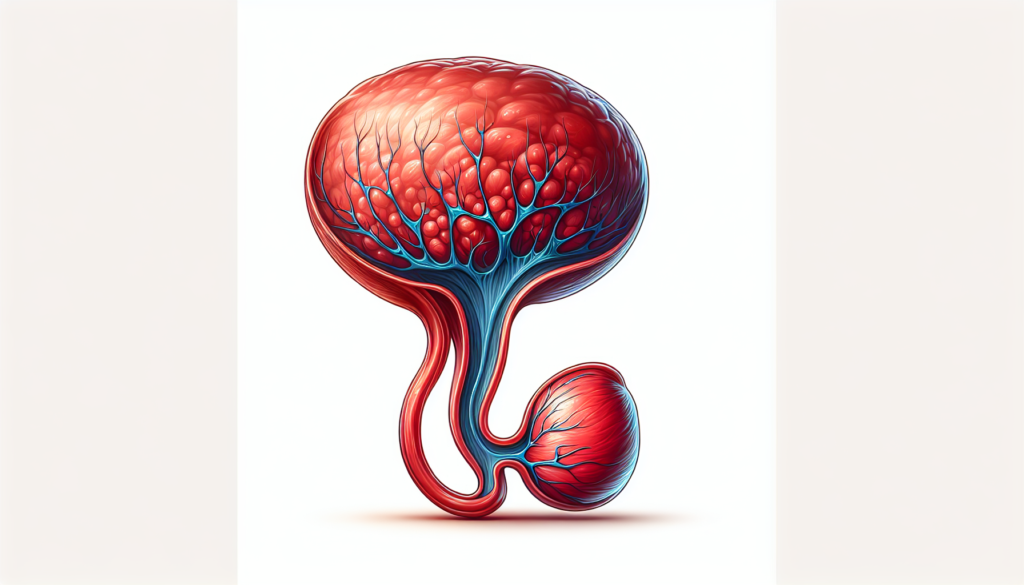Are you curious about what the prostate is and how it affects your health? Well, look no further! In this concise article, we will provide you with a clear understanding of the prostate and its significance. So, sit back, relax, and prepare to learn all about this essential male gland that plays a vital role in your well-being. Let's dive right in!
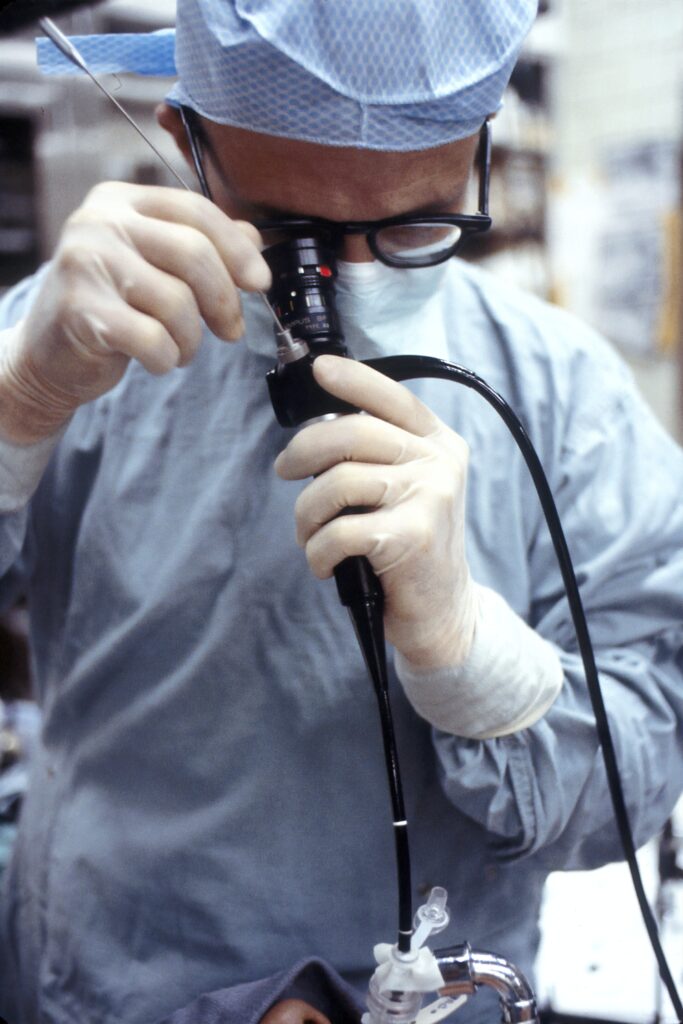
Definition of the Prostate
The prostate is a small gland that is an essential part of the male reproductive system. It is located just below the bladder and surrounds the urethra, which is the tube that carries urine from the bladder out of the body. The prostate is often described as being about the size and shape of a walnut, and it weighs about one ounce.
Basic Definition of the Prostate
The prostate can be defined as a gland in the male reproductive system that is responsible for producing and secreting prostatic fluid. This fluid plays a crucial role in nourishing and protecting sperm as they travel through the reproductive tract. The prostate is also involved in the process of ejaculation.
Role of the Prostate in the Body
The prostate has several important functions in the body. One of its primary roles is to produce prostatic fluid, which makes up a significant portion of semen. This fluid helps to nourish and protect the sperm, increasing their chances of successfully fertilizing an egg. Additionally, the prostate gland plays a role in the process of ejaculation by contracting and releasing the stored semen.
Anatomy of the Prostate
To understand the prostate gland better, it is essential to explore its anatomy. This includes its size, shape, location within the body, and its structural composition.
Size and Shape of the Prostate
The prostate gland varies in size and shape among individuals. On average, it is approximately 3 to 4 centimeters in diameter and weighs around one ounce. The shape of the prostate is often compared to that of a walnut, but it may vary slightly depending on factors such as age and overall health.
Location of the Prostate Within the Body
The prostate is located just below the bladder and in front of the rectum. It surrounds the urethra, which is the tube that carries both urine and semen out of the body. Its position allows the prostate to interact with both the urinary system and the reproductive system.
Structural Composition of the Prostate
The prostate gland is made up of different types of tissues. It consists of glandular tissue, which is responsible for the production and secretion of prostatic fluid. Additionally, the prostate contains fibrous tissue, smooth muscle tissue, and connective tissue. These various components work together to support the function and structure of the prostate.
Function of the Prostate
Understanding the function of the prostate is essential to appreciate its importance in the male reproductive system. The prostate's primary functions involve reproduction, the production of prostatic fluid, and its contribution to semen.
Role of the Prostate in Reproduction
The prostate gland plays a crucial role in reproduction. When a man ejaculates, the prostate contracts and releases prostatic fluid into the urethra. This fluid contains nutrients and chemicals that help nourish and protect the sperm as they travel through the reproductive tract. Without the prostate's contribution, the chances of successful fertilization of an egg would be significantly reduced.
Production of Prostatic Fluid
One of the main functions of the prostate is to produce prostatic fluid. This fluid is composed of substances such as enzymes, proteins, and ions. It is responsible for making up a significant portion of semen, which is ejaculated during sexual activity. Prostatic fluid helps to activate and energize sperm, allowing them to swim and reach their destination.
Contribution to Semen
Semen is a mixture of sperm and various fluids, including prostatic fluid. The prostate gland's contribution to semen is crucial for the overall health and function of sperm. Prostatic fluid helps to provide nourishment, protection, and an optimal environment for sperm to survive and function effectively.
Changes in the Prostate Over Time
The prostate undergoes several changes throughout a man's life, particularly during puberty and as part of the aging process. Understanding these changes and the possible conditions affecting the prostate is essential for maintaining prostate health.
Prostate Development During Puberty
During puberty, the prostate gland grows and reaches its mature size. This growth is stimulated by hormonal changes, particularly an increase in testosterone production. The prostate continues to grow and develop throughout adolescence and into adulthood.
Age-Related Changes in the Prostate
As men age, the prostate undergoes further changes. These changes are often influenced by hormonal fluctuations and can include an increase in prostate size, known as benign prostatic hyperplasia (BPH). Age-related changes can also increase the risk of developing prostate conditions such as prostatitis and prostate cancer.
Possible Changes or Conditions That May Affect the Prostate
Aside from age-related changes, several other factors can affect the prostate's health and function. These include lifestyle choices, such as diet and exercise, as well as genetic predispositions and environmental factors. It is essential to monitor the prostate's health and be aware of potential conditions that may develop.
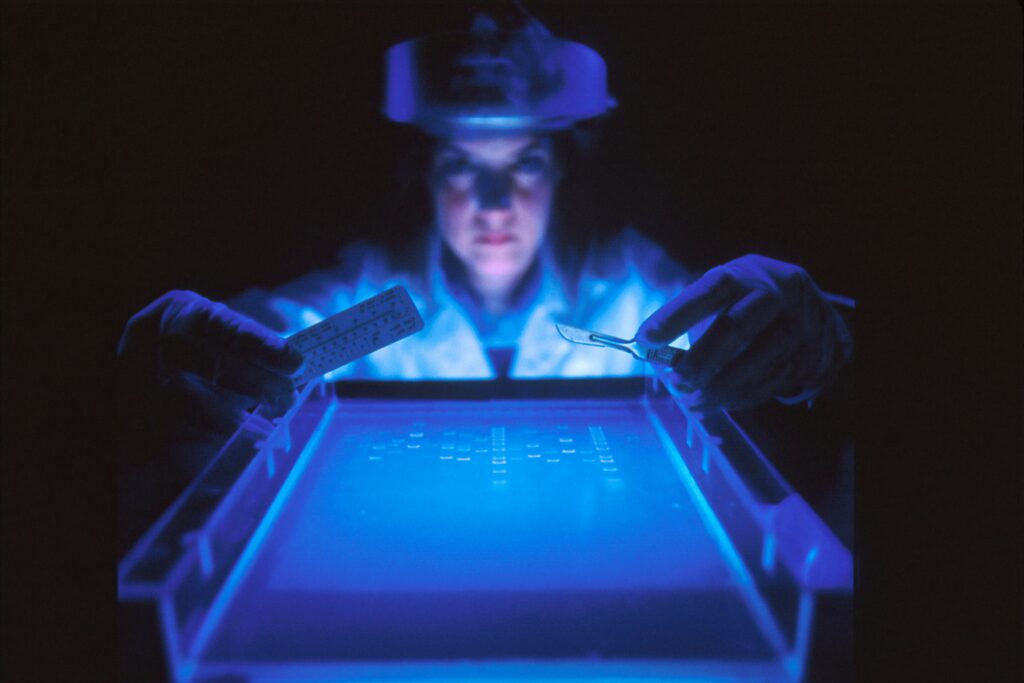
Common Prostate Disorders and Diseases
While the prostate is vital for reproductive health, it is also susceptible to various disorders and diseases. Understanding these conditions is crucial for early detection and effective treatment.
Benign Prostatic Hyperplasia (BPH)
Benign prostatic hyperplasia, also known as an enlarged prostate, is a common condition that affects many men as they age. BPH occurs when the prostate gland grows in size, placing pressure on the urethra and causing urinary symptoms such as frequent urination, weak urine flow, and difficulty emptying the bladder.
Prostatitis
Prostatitis refers to the inflammation or infection of the prostate gland. This condition can cause discomfort, pain, and urinary symptoms. There are different types of prostatitis, including acute bacterial prostatitis, chronic bacterial prostatitis, chronic pelvic pain syndrome, and asymptomatic inflammatory prostatitis.
Prostate Cancer
Prostate cancer is one of the most common forms of cancer in men. It occurs when abnormal cells in the prostate gland multiply and form tumors. Prostate cancer can vary widely in its aggressiveness and progression, ranging from slow-growing tumors that may not require treatment to aggressive forms that can spread to other parts of the body.
Prostate Screening and Diagnosis
Regular screening and early detection are crucial for effectively managing prostate health. Understanding common screening tests and diagnostic procedures is essential for identifying potential issues and initiating appropriate treatment.
Common Screening Tests for Prostate Health
Prostate-specific antigen (PSA) blood tests and digital rectal exams (DRE) are common screening tests used to assess prostate health. PSA tests measure the levels of PSA in the blood, which can be an indicator of potential prostate issues. DRE involves a doctor manually examining the prostate gland through the rectum.
Reading and Analyzing Prostate Screening Results
Interpreting prostate screening results requires an understanding of specific thresholds and ranges associated with PSA levels and DRE findings. Abnormal results may warrant further investigation and diagnostic procedures to determine the presence of any prostate disorders or diseases.
Procedures for Diagnosing Prostate Disorders and Diseases
If screening tests indicate potential issues, further diagnostic procedures may be necessary. These can include imaging tests such as ultrasounds, MRI scans, and biopsies, which involve taking tissue samples from the prostate for analysis. These procedures help doctors determine the presence and severity of conditions such as BPH, prostatitis, or prostate cancer.
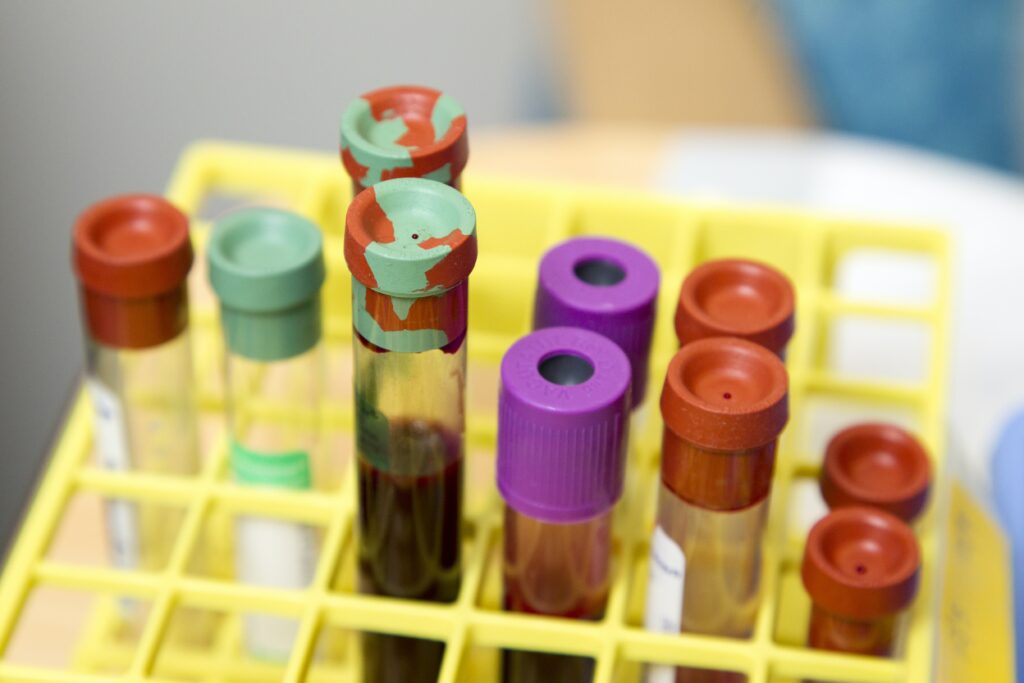
Management and Treatment of Prostate Diseases
When prostate disorders or diseases are diagnosed, management and treatment options can help alleviate symptoms, slow disease progression, or eliminate cancerous cells.
Lifestyle Changes to Improve Prostate Health
Certain lifestyle changes can promote prostate health. These include maintaining a balanced diet rich in fruits, vegetables, and whole grains, exercising regularly, managing stress, and avoiding smoking and excessive alcohol consumption. These changes can help reduce the risk or progression of certain prostate conditions.
Medications for Prostate Conditions
Various medications are available to manage prostate conditions. For BPH, medication options may include alpha-blockers to relax the muscles around the prostate, or 5-alpha reductase inhibitors to shrink the prostate. Antibiotics may be prescribed for bacterial prostatitis, while anti-inflammatory medications may help manage chronic pelvic pain syndrome.
Surgical Procedures for Prostate Conditions
In some cases, surgical intervention may be necessary to address prostate conditions. Surgical options for BPH may include transurethral resection of the prostate (TURP), laser surgery, or minimally invasive procedures such as prostate artery embolization. Prostate cancer may require treatments such as radical prostatectomy, radiation therapy, or targeted therapies.
Prostate Cancer
Prostate cancer is a significant concern for many men and their loved ones. Understanding the causes, signs, symptoms, and treatment options is essential for managing this potentially life-threatening condition.
Causes of Prostate Cancer
The exact causes of prostate cancer are not fully understood. However, certain risk factors have been identified, including age, family history, race, and certain genetic mutations. Hormonal imbalances and exposure to certain environmental factors may also contribute to the development of prostate cancer.
Signs and Symptoms of Prostate Cancer
In the early stages, prostate cancer may not produce noticeable symptoms. As the disease progresses, symptoms may include urinary changes, such as frequent urination or difficulty urinating, blood in the urine or semen, erectile dysfunction, pain or discomfort in the pelvic area, and bone pain. It is important to consult a healthcare professional if any concerning symptoms arise.
Treatment Options for Prostate Cancer
Treatment options for prostate cancer depend on various factors, including the stage and aggressiveness of the cancer, as well as the overall health of the individual. Treatment options may include active surveillance, surgery, radiation therapy, hormone therapy, chemotherapy, immunotherapy, and targeted therapy. Each treatment approach aims to eliminate or control the growth and spread of cancer cells.
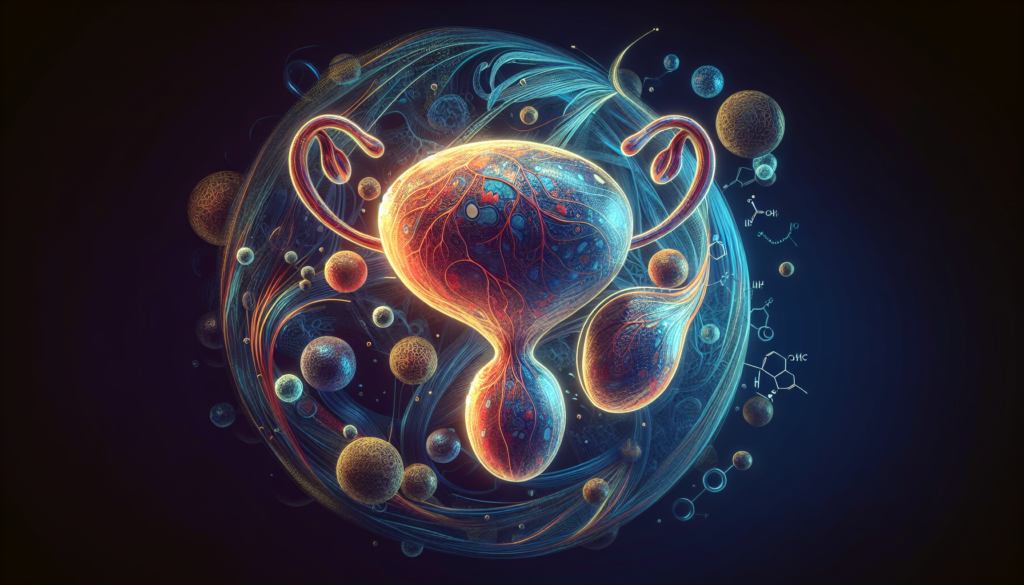
Prostate Health
Maintaining optimal prostate health is essential for overall well-being. Several factors can affect prostate health, including lifestyle choices, diet, and exercise.
Factors Affecting Prostate Health
Numerous factors can influence prostate health. Age, genetics, hormonal balance, and environmental factors can all contribute to the development of prostate disorders and diseases. Additionally, maintaining a healthy lifestyle, managing stress levels, and engaging in regular physical activity can positively impact prostate health.
Diet for a Healthy Prostate
A well-rounded and nutritious diet is essential for prostate health. Including a variety of fruits and vegetables, whole grains, lean proteins, and healthy fats can provide the necessary vitamins, minerals, and antioxidants to support prostate function. Foods rich in lycopene, such as tomatoes, have also been associated with a reduced risk of prostate cancer.
Exercise and Prostate Health
Regular exercise has been linked to improved prostate health. Engaging in physical activity can help maintain a healthy weight, regulate hormone levels, improve circulation, and reduce inflammation. Aim for at least 150 minutes of moderate-intensity exercise per week, such as brisk walking, swimming, or cycling, to support prostate health.
Myths and Truths About the Prostate
There are several common myths and misconceptions surrounding the prostate. Clearing up these misconceptions is important for promoting accurate information and understanding.
Common Myths About the Prostate
One common myth is that frequent sexual activity can cause prostate problems. However, there is no scientific evidence to support this claim. Another myth suggests that prostate cancer is always fatal, but with early detection and appropriate treatment, the prognosis can be highly successful. It is important to separate fact from fiction when it comes to prostate health.
Facts to Dispel Myths About the Prostate
Contrary to popular beliefs, prostate health is not solely determined by sexual activity. It is influenced by various factors, including age, genetics, and overall lifestyle. Additionally, prostate cancer is not an automatic death sentence. Early detection and proper treatment can significantly improve outcomes and survival rates. By understanding the facts, individuals can make informed decisions about their prostate health.
In conclusion, the prostate plays a vital role in male reproductive health. Understanding its anatomy, functions, and potential issues is crucial for overall well-being. Regular screening, early detection, and appropriate treatment options can help manage and prevent conditions such as BPH, prostatitis, and prostate cancer. By adopting a healthy lifestyle, maintaining a balanced diet, and engaging in regular exercise, individuals can support their prostate health and promote a better quality of life.
